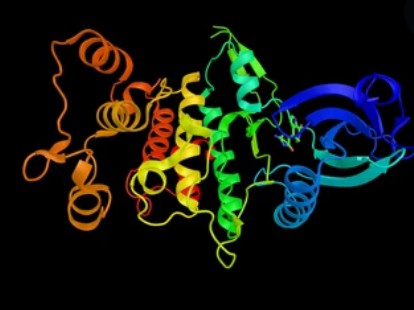Over the past years, the identification of phosphorylation sites has provided new insights to reveal the specific functions of proteins and has become a research hotspot. Creative Proteomics is a comprehensive contract research organization (CRO) with extensive experience in phosphorylation site identification. We are committed to providing precise localization and prediction of phosphorylation sites to meet our client's specific project needs.
Overview of phosphorylation site identification

Protein phosphorylation mediated by protein kinases is one of the most widespread regulatory mechanisms in eukaryotes. This common modification regulates protein function by adding negatively charged phosphate groups to serine (Ser, S), threonine (Thr, T), or tyrosine (Tyr, Y) residues, involved in a range of cellular processes, such as gene expression, intracellular signal transduction, cell proliferation, differentiation, and apoptosis. Nowadays, there are several experimental approaches developed for the detection of protein phosphorylation, including western blotting, radioactive chemical labeling, and mass spectrometry (MS)-based analysis. In addition, computational approaches are regarded as an ideal choice for phosphorylation site identification. In such an era of big data, computational prediction of phosphorylation sites is becoming increasingly popular because it is inexpensive and does not require specialized equipment.
The service offering at Creative Proteomics
- Tandem mass spectrometry (MS/MS)-based phosphorylation site identification
In the past, identification of protein phosphorylation sites was difficult until the advent of the high-throughput modern technique of tandem mass spectrometry (MS/MS). Liquid chromatography-tandem mass spectrometry (LC-MS/MS) enables large-scale, discovery-based phosphoproteomics, requiring enrichment strategies for reliable phosphorylation site identification. Although MS/MS-based identification methods are costly, labor-intensive, and require technical knowledge and specialized equipment, it is still the most commonly used and accurate technique for phosphorylation site identification today. Based on our highly sensitive HPLC-MS/MS pipeline, customized bioinformation analysis strategies, and experienced informatics researchers, we are able to provide faster and more sensitive identification of phosphorylation sites for various complex samples.
- Computational method-based phosphorylation site identification
Phosphorylation sites identified by computational-based methods are often inexpensive, efficient and less labor-intensive, and therefore provide an attractive complement to experimental methods for the identification of phosphorylation sites. We have strong expertise in PTM site prediction by computational methods, including phosphorylation sites. Based on accurate phosphorylation site prediction tools, we are able to help our clients achieve efficient and rapid phosphorylation site identification given only the primary amino acid sequence as input.
Advantages of our service
- Advanced proteomics platform to ensure deep coverage.
- Providing robust and reproducible results for future follow-up studies.
- Experienced professionals work with the highest standards.
- Detailed analysis process and easy-to-follow reports.
Creative Proteomics strives to be a guide and assistant in protein phosphorylation research for our customers worldwide. For more information about our phosphorylation site identification services or if you have any questions about our services, please contact us. Our professional staff will answer your questions until you are satisfied. We are looking forward to working with you!
References
- Tobe, Brian TD, et al. "Phosphoproteomic analysis: an emerging role in deciphering cellular signaling in human embryonic stem cells and their differentiated derivatives." Stem Cell Reviews and Reports 8.1 (2012): 16-31.
- Ismail, Hamid D., et al. "RF-Phos: a novel general phosphorylation site prediction tool based on random forest." BioMed research international 2016 (2016).
Our products and services are for research use only.




